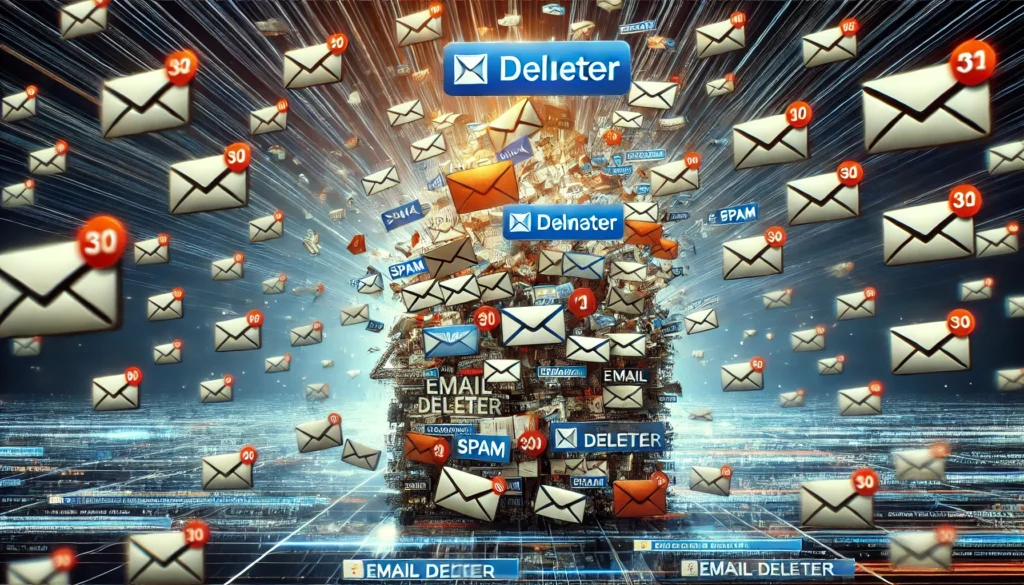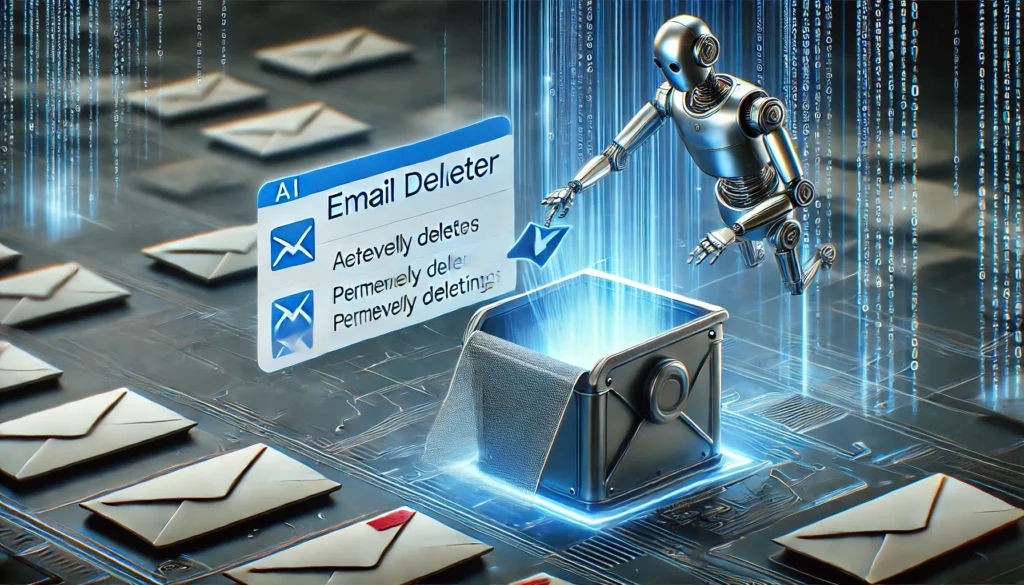Spam, a term that has become synonymous with unwanted messages, has a rich history that dates back to the early days of email communication. Its evolution from benign annoyances to sophisticated phishing schemes offers valuable insights into why robust anti-spam strategies are essential today.
You may also like: Top Email Deleters for Inbox Management
The Origins of Spam
The term “spam” originated from a Monty Python sketch where the repetitive mention of spammed food items mirrored the nature of unsolicited messages. In the early days of the internet, spam was mainly limited to email and was often harmless. However, as the digital landscape expanded, so did the tactics of spammers. Initially, spam messages were merely advertising ploys, but they soon evolved into more deceptive and harmful forms.
The Evolution from Annoyance to Threat
As technology advanced, so did the methods employed by spammers. What started as a minor inconvenience quickly escalated into a significant cybersecurity threat. Spam emails evolved from simple advertisements to complex phishing schemes designed to steal personal information. This evolution underscores the importance of understanding spam’s history to effectively combat it.
The Impact on Digital Communication
The rise of spam has significantly impacted how we communicate digitally. With the influx of junk mail, users became more cautious about sharing personal information online. This caution has led to the development of advanced spam filters and security measures. Understanding the historical impact of spam helps us appreciate the necessity of these protective strategies.

Strategies to Delete All Spam Messages Now
Effectively dealing with spam requires a combination of utilizing existing technology and adopting proactive measures. By implementing these strategies, you can maintain a clean and secure digital environment.
How to Delete All Junk Mail in Gmail
Gmail users benefit from advanced spam filters, but there are additional steps to ensure a pristine inbox:
- Utilize Gmail Filters: Create specific filters to automatically delete spam messages. Navigate to Settings > Filters and Blocked Addresses > Create a new filter. Define parameters that identify spam, and select “Delete it” as the action. This proactive approach ensures that unwanted messages are filtered out before reaching your inbox.
- Report Spam: Actively mark spam emails that bypass filters. This action enhances Gmail’s algorithms, improving their ability to identify and block spam in the future. Reporting spam contributes to a collective effort to refine spam filters for all users.
- Unsubscribe Carefully: For nuisance emails that aren’t overtly threatening, use the unsubscribe feature. Exercise caution, as some unsubscribe links can lead to phishing sites. Always verify the legitimacy of the sender before clicking any links within the email.
Stop Spam Texts
Text message spam, or “smishing,” is a growing concern that requires immediate attention:
- Block Numbers: Most smartphones allow users to block specific numbers. On an iPhone, open the message, tap the contact at the top, and select “Block this Caller.” Android users can open the message, tap the three dots in the upper right corner, and choose “Block number.” Blocking ensures that persistent spammers cannot reach you.
- Report Text Spam: Forward spam texts to 7726 (SPAM) to alert your carrier. This step assists in identifying and combating widespread spam campaigns. By reporting spam, you contribute to broader efforts to clamp down on smishing.
- Use Third-Party Apps: Applications like RoboKiller and Truecaller offer additional protection by identifying and blocking spam texts before they reach your device. These apps use databases of known spammers to preemptively filter out unwanted messages.
The Science Behind Spam Filters
Spam filters are sophisticated systems that use complex algorithms and machine learning to distinguish between legitimate messages and spam. Understanding how these filters work can enhance their effectiveness.
How Spam Filters Operate
Spam filters analyze various factors, including sender reputation, message content, and frequency of similar messages marked as spam. They use algorithms to evaluate each email and determine its legitimacy. This process involves scanning for keywords, suspicious links, and known spammy patterns.
The Role of Machine Learning
Machine learning plays a crucial role in refining spam filters. By continuously learning from millions of emails, these systems improve their accuracy over time. They adapt to new spam tactics by recognizing emerging patterns and adjusting their algorithms accordingly.
Limitations and Continuous Improvement
Despite their sophistication, spam filters are not infallible. Spammers constantly develop new tactics to bypass these defenses, highlighting the need for continuous improvement. Users can aid this process by actively reporting spam, which helps filters learn and adapt to new threats.
Future Implications and Trends
As technology evolves, the sophistication of spam and the tools used to combat it will also change. Staying informed about future trends is essential for maintaining digital security.
The Rise of AI-Driven Solutions
The future of spam prevention lies in AI-driven solutions that can anticipate and adapt to new spam techniques in real time. These advanced systems will use predictive analytics to stay ahead of cybercriminals, offering more robust protection.
Emerging Threats and Tactics
Cybercriminals are constantly developing new tactics to bypass filters and deceive users. As digital communication evolves, so too will the methods used by spammers. Staying informed about emerging threats is crucial for maintaining security.
The Importance of Vigilance
In an ever-changing digital landscape, vigilance is key. By staying informed about the latest spam trends and adopting proactive measures, users can protect themselves from evolving threats. Continuous education and adaptation are essential components of a robust anti-spam strategy.

Practical Tips for a Spam-Free Experience
Implementing practical strategies can significantly reduce the impact of spam on your digital life. These tips offer simple yet effective ways to enhance your online security.
Protect Your Email Address
Avoid using your primary email address for online sign-ups. Instead, use a disposable or secondary email address to prevent spam from reaching your main inbox. This simple step can significantly reduce the volume of unwanted messages.
Regularly Update Passwords
Strong, unique passwords for your email accounts are crucial for preventing unauthorized access. Regularly updating passwords adds an additional layer of security, making it more difficult for spammers to exploit your accounts.
Educate Yourself and Others
Awareness is a powerful tool in the fight against spam. Understanding how to recognize and avoid spam can reduce the risk of falling victim to scams. Share this knowledge with others to promote a safer digital environment for everyone.
Balancing Technology and Personal Habits
While technology plays a vital role in combating spam, personal habits are equally important. A proactive approach can help maintain a spam-free digital life.
Regular Inbox Maintenance
Regularly cleaning your inbox prevents the accumulation of spam and unwanted messages. Set aside time each week to review and delete unnecessary emails. This habit ensures that your inbox remains organized and secure.

Stay Informed About New Tactics
Staying informed about new spam tactics is essential for maintaining security. Subscribe to cybersecurity newsletters or follow industry experts to stay updated on the latest trends and threats. Knowledge is a powerful defense against evolving spam tactics.
Implementing Proactive Measures
By employing the strategies outlined above, you can take control of your digital environment. Combining technological tools with good personal habits creates a robust defense against spam, allowing you to enjoy a safer and more efficient online experience.
Conclusion
In our ever-connected world, spam messages are an unfortunate reality. However, with the right tools and knowledge, you can significantly reduce their impact. By understanding the history and evolution of spam, implementing effective strategies, and staying informed about future trends, you can protect your inbox and phone from unwanted intrusions. Embrace these practices to reclaim your digital peace of mind, ensuring a safer and more enjoyable online experience.
Further Reading:
How To Auto Delete Spam In Gmail
Computer help: What is the best way to permanently delete spam?
How to Delete All Spam Emails in Gmail: Complete Guide
Important Note: The information contained in this article is for general informational purposes only, and should not be construed as health or medical advice, nor is it intended to diagnose, prevent, treat, or cure any disease or health condition. Before embarking on any diet, fitness regimen, or program of nutritional supplementation, it is advisable to consult your healthcare professional in order to determine its safety and probable efficacy in terms of your individual state of health.
Regarding Nutritional Supplements Or Other Non-Prescription Health Products: If any nutritional supplements or other non-prescription health products are mentioned in the foregoing article, any claims or statements made about them have not been evaluated by the U.S. Food and Drug Administration, and such nutritional supplements or other health products are not intended to diagnose, treat, cure, or prevent any disease.


